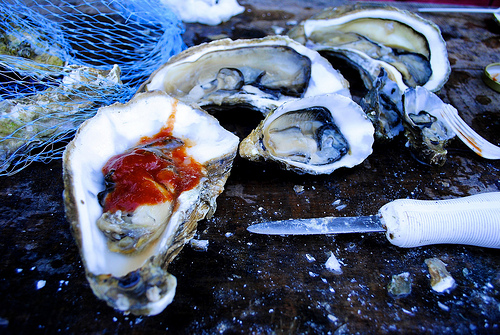An oyster farm in Washington. (Photo by Kent Wang.)
The first suspects were bacteria.
Something was killing the microscopic oyster larvae at the hatcheries in Washington’s Dabob Bay and in Oregon’s Netarts Bay in recent years. The tiny oyster shells were crumbling faster than they could grow back, says Bill Dewey, public policy director for Taylor Shellfish Farms, which harvests geoducks, oysters, and other shellfish around Puget Sound. And soon, hatchery experts realized increasing ocean acidification was the true culprit. But what exactly that means, is yet to be determined.
“Ocean debasification is a bit awkward and not scientifically precise,” says Jan Newton, a senior principal oceanographer at the University of Washington.
Think back to high school chemistry and “pH,” which measures the acidity or alkalinity of a fluid on a 14-point scale. The lower the number, the more acidic something is. Distilled water is a seven and is considered “neutral.” Sea water’s pH is normally 8.1 to 8.2 on the alkaline side, where as black coffee’s pH is... Read more

